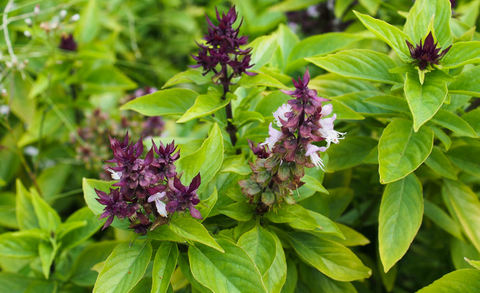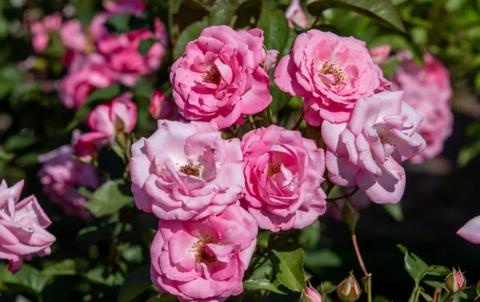Do you dream of a garden adorned with the timeless beauty of roses? In this article, we'll delve into the enchanting world of roses and explore how to select the perfect varieties for your spring planting endeavors. From hybrid teas to climbing roses, we'll cover everything you need to know to create a stunning rose garden that will be the envy of your neighborhood.

Understanding Rose Varieties
Hybrid Teas
Hybrid teas are renowned for their classic beauty and elegant form. With large, single blooms atop long stems, they are ideal for cutting and displaying in vases.
Floribundas
Floribundas offer a profusion of smaller blooms, making them excellent choices for adding bursts of color to garden beds and borders. They are known for their continuous blooming throughout the growing season.
Grandifloras
Grandifloras combine the traits of hybrid teas and floribundas, producing large, showy blooms on sturdy stems. They make striking focal points in garden landscapes.
Climbing Roses
Climbing roses add vertical interest to gardens, adorning walls, trellises, and fences with their sprawling growth habit. They come in a variety of colors and bloom types, making them versatile choices for gardeners.
Miniature Roses
Miniature roses are perfect for small gardens, containers, or edging pathways. Despite their diminutive size, they produce blooms that rival their larger counterparts in beauty and fragrance.
Factors to Consider Before Selecting Roses
Climate and Hardiness Zones
Consider your local climate and the hardiness zones of the roses you're interested in. Choose varieties that are well-suited to your region to ensure their success in your garden.
Sunlight Requirements
Most roses thrive in full sun, so select a location in your garden that receives at least 6-8 hours of sunlight per day. Some varieties can tolerate partial shade, but they may not bloom as prolifically.
Soil Conditions
Roses prefer well-drained, fertile soil with a slightly acidic pH. Amend heavy clay or sandy soil with organic matter to improve its texture and fertility before planting.
Space and Garden Design
Consider the size and layout of your garden when choosing roses. Hybrid teas and grandifloras may require more space to reach their full potential, while miniature roses are well-suited to smaller areas.
Choosing Roses for Spring Planting
Early-Blooming Varieties
Select roses that bloom early in the season to enjoy a longer flowering period. Look for varieties known for their early spring blooms, such as 'Iceberg' or 'Double Delight'.
Fragrance and Aroma
Choose roses with fragrant blooms to enhance the sensory experience of your garden. Consider varieties like 'Mr. Lincoln' or 'Queen of Sweden', prized for their captivating scents.
Disease Resistance
Opt for disease-resistant varieties to minimize the need for chemical interventions and ensure the health and vigor of your roses. Look for cultivars bred for resistance to common rose ailments such as black spots and powdery mildew.
Color Palette and Aesthetic Appeal
Select roses in colors that complement your existing garden palette or create striking contrasts. Whether you prefer the classic elegance of white roses or the vibrant hues of reds and oranges, choose varieties that speak to your aesthetic sensibilities.

Planting and Caring for Roses
Selecting the Right Location
Choose a sunny, well-drained location with good air circulation for planting your roses. Avoid areas prone to waterlogging or where other plants may shade them.
Soil Preparation and Amendments
Prepare the planting area by loosening the soil and incorporating organic matter such as compost or aged manure. This will improve soil structure, fertility, and drainage, providing an optimal environment for root growth.
Proper Planting Techniques
Dig a hole slightly larger than the root ball of your rose plant and set it at the same depth as it was in the nursery container. Backfill with soil, firming it gently around the roots, and water thoroughly to settle the soil.
Watering and Fertilizing
Keep newly planted roses consistently moist but not waterlogged until they become established. Once established, water deeply and infrequently to encourage deep root growth. Fertilize regularly with a balanced rose fertilizer according to package instructions.
Pruning and Deadheading
Prune roses in late winter or early spring to remove dead or diseased wood, improve air circulation, and shape the plants. Deadhead spent blooms throughout the growing season to encourage continuous flowering.
Pest and Disease Management
Monitor your roses regularly for signs of pests or diseases and take prompt action to address any issues. Use cultural practices such as proper pruning and sanitation to minimize problems, and consider natural or organic pest control methods whenever possible.
Companion Planting with Roses
Plants That Complement Roses
Choose companion plants that enhance the beauty and health of your roses. Consider pairing them with perennials such as lavender, catmint, or salvia, which share similar cultural requirements and provide complementary colors and textures.
Plants That Deter Pests
Incorporate pest-repellent plants into your garden design to help protect your roses from common pests. Herbs like garlic, chives, and mint can deter aphids, while aromatic plants like marigolds may repel nematodes and other soilborne pests.

Designing Rose Gardens
Formal Rose Gardens
Create a formal rose garden with geometrically arranged beds, symmetrical plantings, and defined pathways. Use low hedges or borders to delineate individual rose beds and maintain a sense of order and structure.
Cottage-style Rose Gardens
Embrace a more relaxed, informal aesthetic with a cottage-style rose garden. Mix roses with other cottage garden favorites like delphiniums, foxgloves, and daisies for a charming, nostalgic feel.
Rose Borders and Hedges
Use roses to create borders or hedges that define garden spaces and provide structure to the landscape. Choose compact, bushy varieties for low borders or taller, upright varieties for more substantial hedges.

Rose Care Tips for Spring
Spring Pruning and Maintenance
Conduct spring pruning to remove dead or damaged wood, shape the plants, and promote healthy growth and flowering. Inspect your roses for signs of winter damage or disease and take appropriate action.
Protecting Roses from Late Frosts
Keep an eye on weather forecasts and be prepared to protect your roses from late frosts or freezes. Cover tender new growth with frost cloth or cardboard boxes overnight to prevent damage.
Monitoring for Early Signs of Pests and Diseases
Be vigilant for early signs of pests or diseases as temperatures warm up. Inspect your roses regularly for aphids, thrips, spider mites, and other common pests, as well as symptoms of fungal diseases like black spots or powdery mildew.
Sustainable Rose Gardening Practices
Organic Pest Control Methods
Use natural or organic pest control methods whenever possible to minimize harm to beneficial insects and other wildlife. Employ techniques such as handpicking pests, releasing beneficial insects, or using homemade remedies like neem oil or insecticidal soap.
Water Conservation Techniques
Practice water conservation in your rose garden by mulching beds to retain moisture, watering deeply and infrequently to encourage deep root growth, and collecting rainwater for irrigation when possible. Consider installing drip irrigation systems to deliver water directly to the roots and minimize waste.
Mulching and Soil Health
Mulch around your roses with organic materials like wood chips, shredded leaves, or straws to suppress weeds, retain soil moisture, and improve soil structure. As the mulch breaks down, it will also contribute valuable organic matter to the soil, enhancing its fertility and health.
Conclusion
Roses are undoubtedly one of the most beloved and iconic flowers in the world of gardening, and with the right selection and care, they can thrive in any garden setting. By understanding the diverse array of rose varieties available, considering key factors like climate and soil conditions, and implementing proper planting and care techniques, you can enjoy a stunning display of roses in your garden year after year. Whether you're a novice gardener or a seasoned rose enthusiast, there's a perfect rose out there waiting to grace your garden with its beauty and fragrance.









